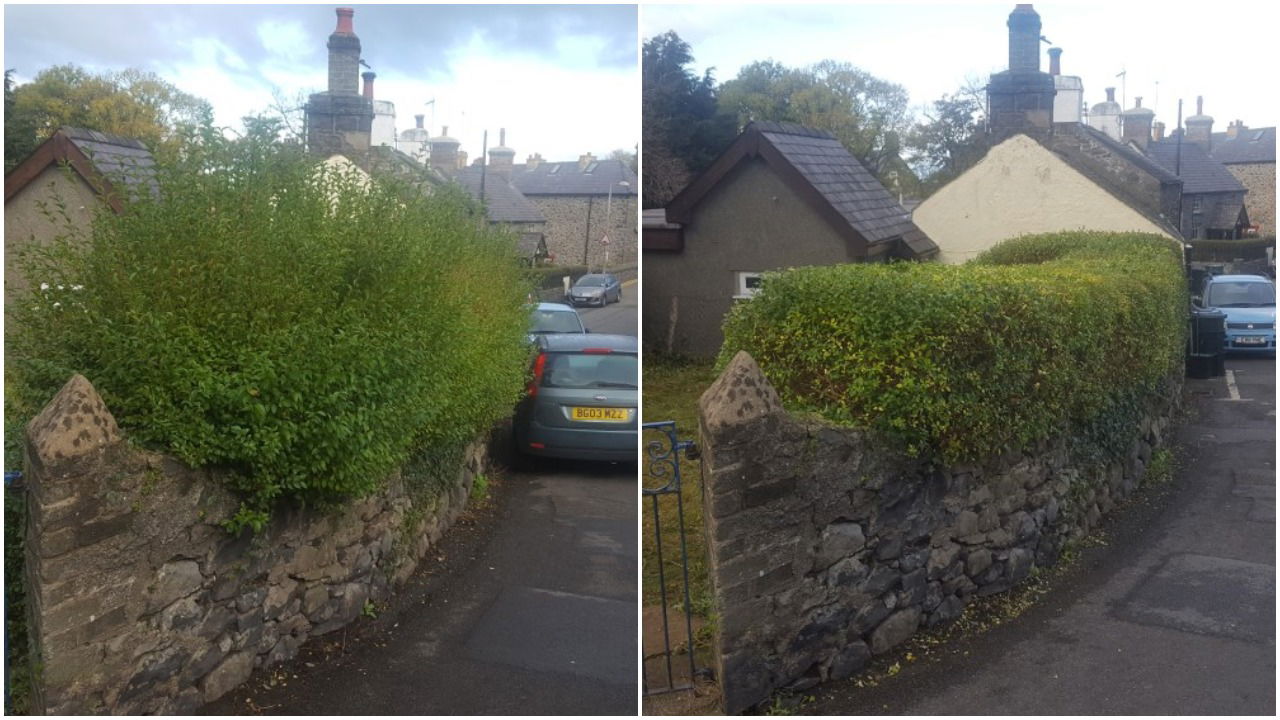Winter Pruning, Reduction of Shrubs, Bushes & Hedges
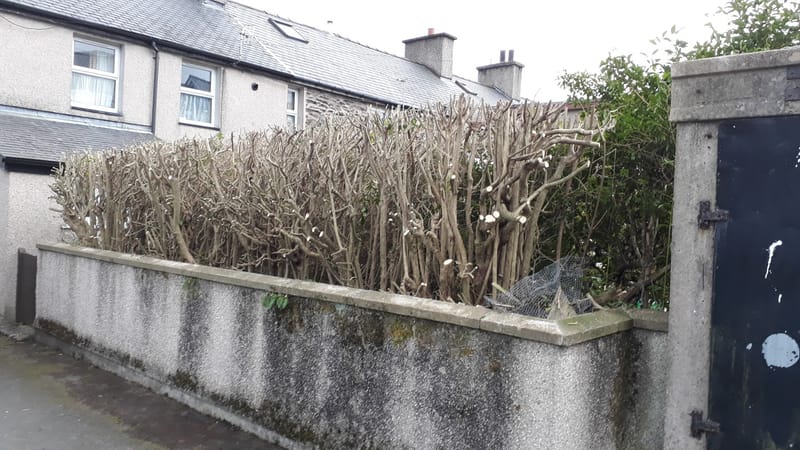
For your gardening needs please use the Free Estimates form you will find it here and I will get back to you.
I carry out hard pruning, reduction and cutting back from October to February, this is for several reasons. Mainly there is an Environmental Law that protects the nest of nesting birds from March to September, and cutting plants hard during the Spring and Summer months will either invigorate growth, stunt growth, cut all the flower heads off or just kill the plant.
(For an estimate on your winter pruning, reduction requirements please use the free estimate form to get in touch).
There are a few exceptions such as the Camellia and Magnolia which need to be pruned during these spring and summer months which is straight after flowering, but in the main all hard pruning should be done when the plant is dormant.
Cutting Back a Smoke Tree
This smoke tree is an example of how gangly and unkept it looks without having any pruning done to it:
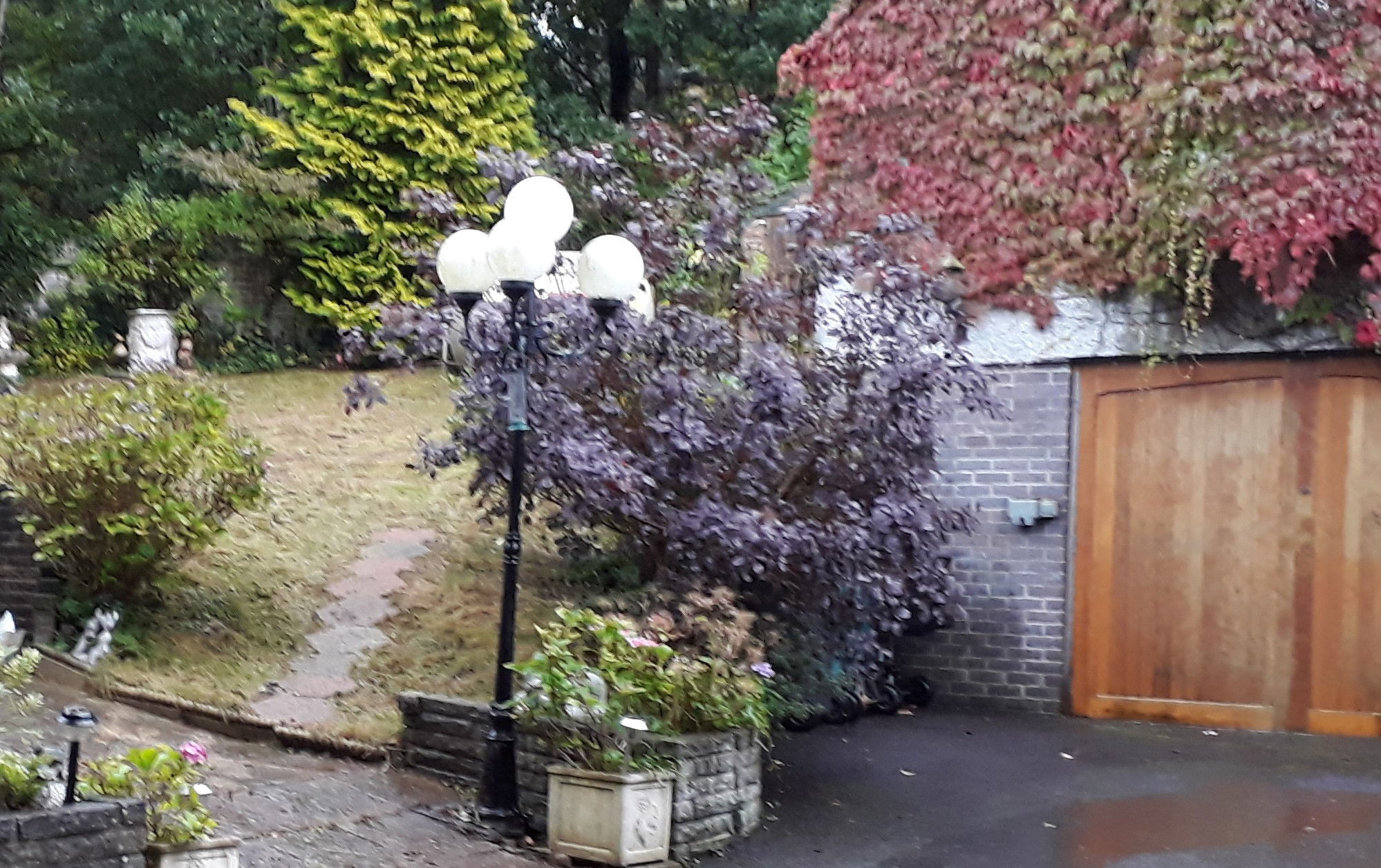
Once I started working on this smoke tree it became obvious that there was a lot of thin sporadic branches and there was nothing for it but to bring it all down to the main trunks for getting fresh branches the following year I could train to get the tree to look its best and be more fitting for the garden.
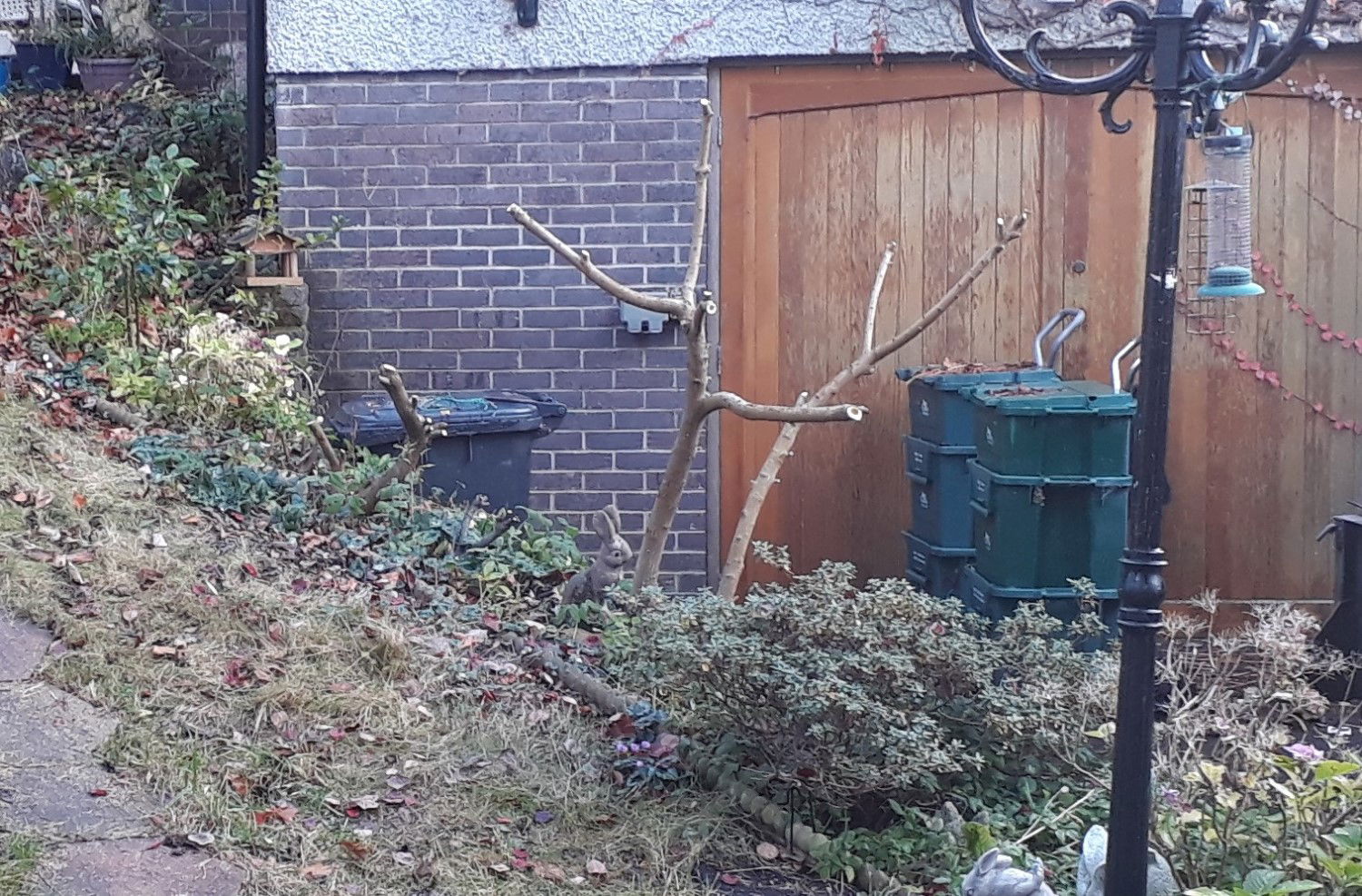
And following such a drastic cut back exatley 12 months later the smoke tree now looks like this.
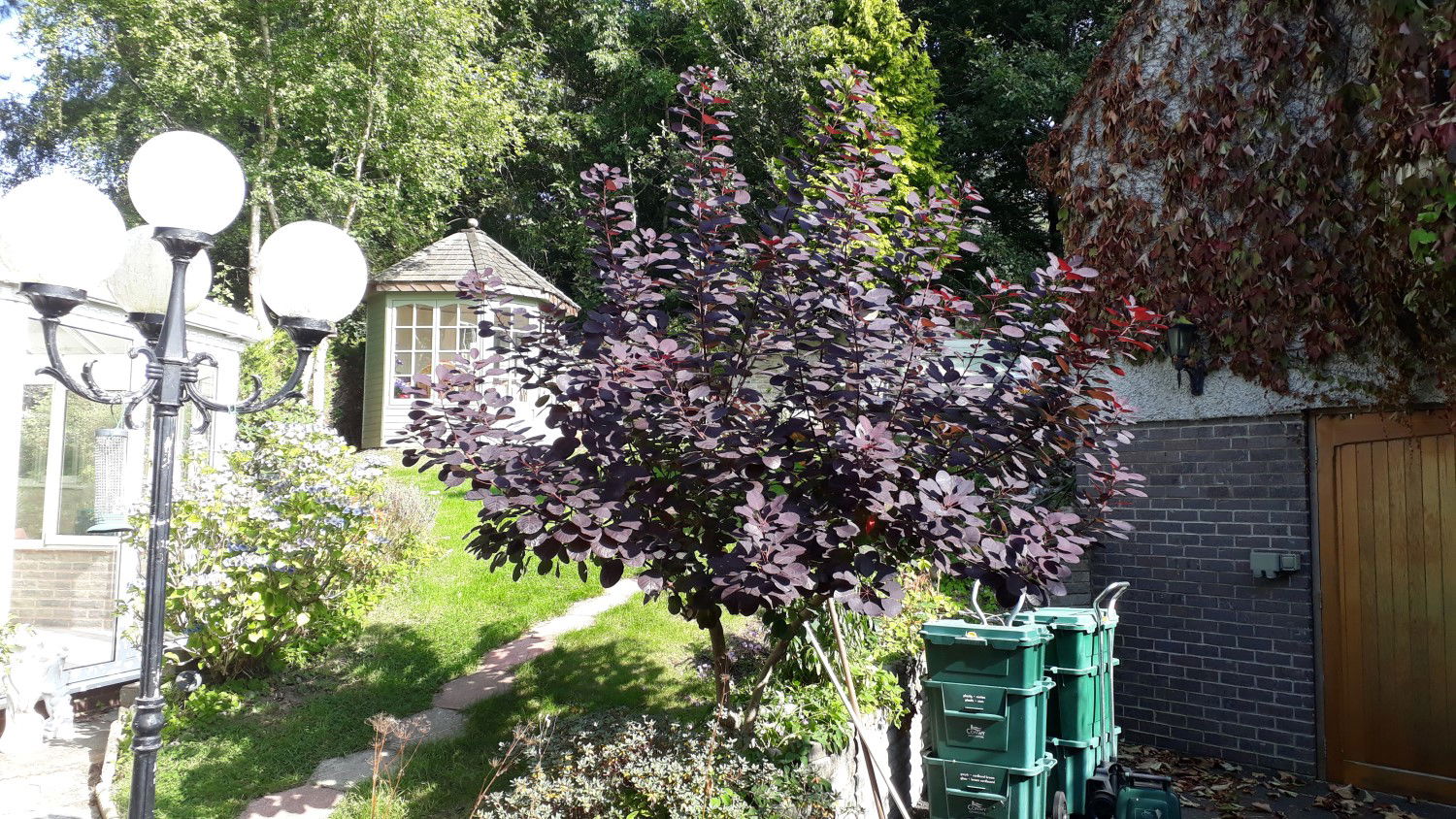
Cutting Back Hard a Privet Hedge
Below is a privet hedge which had become very overgrown, it had been trimmed by others several times before but not correctly as far too much wood was left inside the hedge, cutting back like this can only be done on one side at a time, allowing the hedge to recover before doing the other side in 12 months' time.
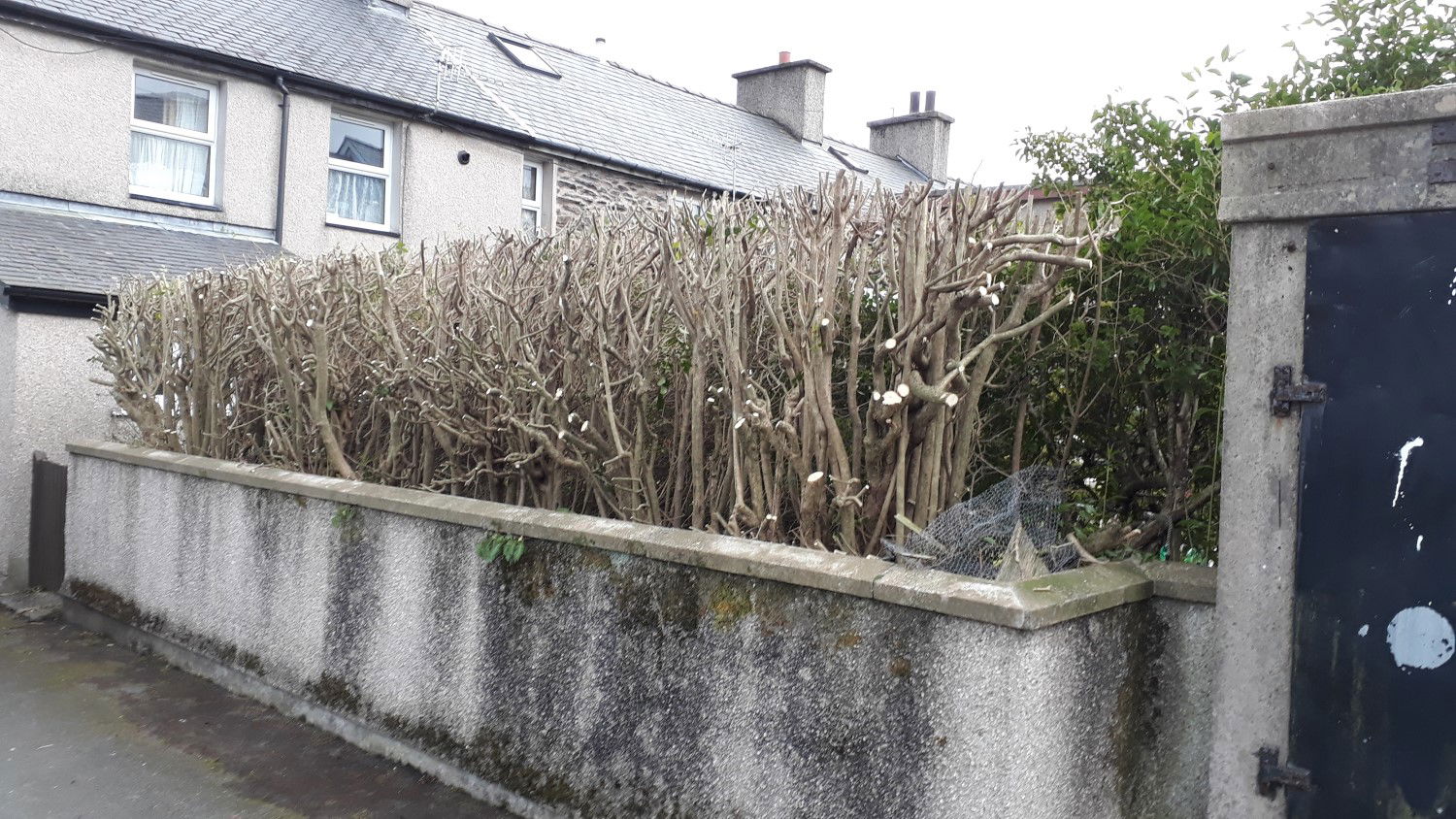
Reshaping Overgrown Bushes
Below is a picture of before and after in the same frame, showing overgrown bushes up against a conservatory before and after being cut back to a size and shape more in-keeping with the garden.
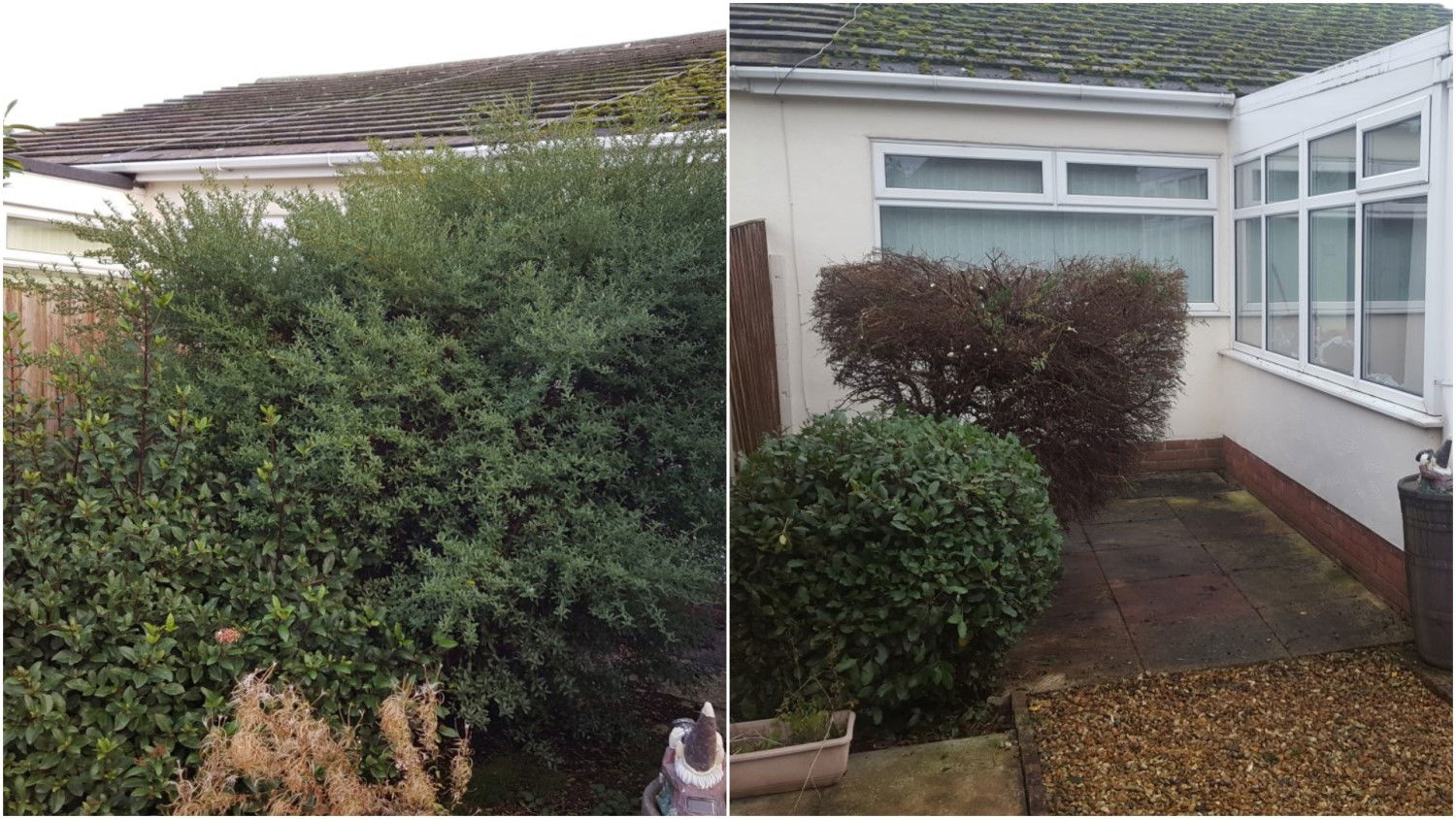
Privet Hedge Trimming
This is hedge trimming below, this is an example of how far a privet hedge should be taken on all three sides, leaving leafes behind for the hedge to quickly recover.
